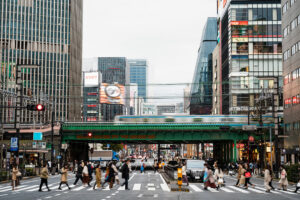
Is Japan ready for a ‘world with interest?’
JAPAN is on the cusp of a brave new world — one where bank deposits yield 0.1% a year.
OK, that might not sound like a revolution. But in a country where an entire generation has grown up knowing nothing but yields near zero, and mortgage rates that seemed to get cheaper by the year, Mitsubishi UFJ Financial Group, Inc.’s move to raise what it pays savers is exceptional.
It followed the shock rate hike by the Bank of Japan, and considering that the megabank slashed its return on deposits to a mere 0.001% in 2016, it’s easier to see why it matters. That shift is just one example of how Japan is stepping into a place many commentators have dubbed the “world with interest.” Anyone under the age of around 40 has no map to navigate this. If the Bank of Japan (BoJ) can stick to its promise and continue to hike — and in view of its history of choosing the worst possible time to raise rates, that’s a big “if.” Many things in the country are about to change.
The question remains: Is Japan really ready for it?
Initial reactions are concerning. In stark contrast to when the BoJ abandoned negative rates in March and markets shrugged, this time the yen tumbled and stocks panicked as many asked if the economy can handle higher rates. On the ground, things feel different, too, with friends and relatives with floating rate mortgages scrambling to establish when, how, and if their repayments will increase.
The BoJ seems to think those concerns will pass. “An improving economy and the resulting rise in interest rates can be expected to lead to an improvement in household income,” the bank said in April. Governor Kazuo Ueda echoed this in his remarks on July 31, punting question after question of the impact on consumers.
It’s true that on balance, households have far more in deposits than they owe in mortgages and other loans. Japan faces little prospect of a mortgage-rate panic like that seen in the UK during Liz Truss’s short term as prime minister. Multiple protections are in place for existing homeowners, with caps to prevent sudden increases.
However, assets are not distributed equally — older households, who’ve had time to pay down mortgages and build wealth, are net asset rich; younger generations in their 30s and 40s, working families with mortgages and car loans, owe more than they have in the bank, according to data from the Japan Research Institute. That means older and richer households will disproportionately benefit.
Ever since Ueda arrived at the central bank 15 months ago, economists have been debating what the “world with interest” will look like. One hope is that, given that the value of money decreases over time in an interest-positive inflationary environment, consumers will spend more. That would be encouraging given their tendency to save. But Japan is frequently a place where economic textbook theories go to die, and it’s entirely possible that asset-poor young couples, already spooked by inflation, will scrimp and save to afford pricier mortgages instead.
Another thing that has economists excited is the prospect that the rising price of debt will spell a potential end to Japan’s “zombie” companies, unproductive entities artificially kept alive by cheap money. That would mean a rise in bankruptcies among debt-laden small- and mid-sized firms — and perhaps lead to the type of unemployment not seen since the early 2000s. But things are changing here, too: The country is in the throes of a chronic labor shortage, and the death of non-productive companies might instead free up resources to do something more useful.
The optimistic take is that the labor shortage means there might not be a better time to set out on a different path. Ueda was bullish in his view that, during the period that mortgage caps keep higher repayments at bay, wages will continue to increase — meaning homeowners will be better off by the time larger repayments roll around. The bank is increasingly confident in its “virtuous cycle” of price hikes and wages increases, believing, as Ueda outlined in May, that the tight labor market and the jolt from inflation has changed firms’ habits permanently.
It seems certain that these changes will work to further break down the cocoon that has sheltered a generation, creating a nation where, in return for flat prices and wages, unemployment and all its downstream social problems were largely warded off.
But things are changing anyway, regardless of what Ueda does. The old social compact is fracturing among a new generation with different attitudes toward risk-taking and company loyalty, and the labor crisis encouraging more workers to jump between firms. A return to the world with interest will almost certainly mean an increase in the bifurcation of haves and have-nots. The government will need to be ready with policies to cushion the blow, and direct spending in the most productive ways. That task will be made trickier when it can no longer rely on cheap cash to finance its debt.
The ultra easy-money policy of previous BoJ Governor Haruhiko Kuroda was frequently seen as a gamble, a jolt that would wake Japan from its slumber. But this new world feels as risky as anything he ever did. It might shock Japan in new and unexpected ways — whether the country is ready or not.
BLOOMBERG OPINION



